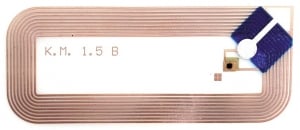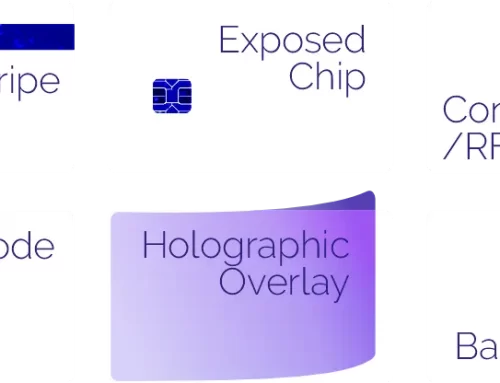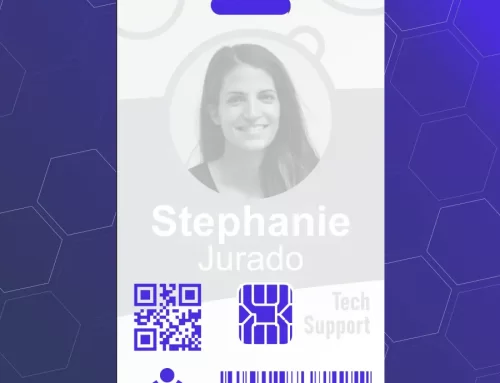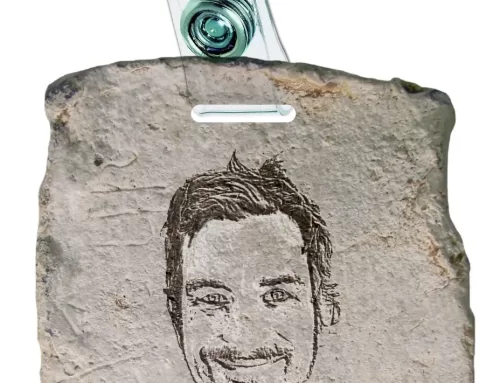RFID cards are contactless cards that include an RFID chip. This chip stores all the necessary data required. The information is transmitted through radio waves which are then picked up by a specific RFID reader. Data from the reader is decoded and transmitted to an integrated software for analysis as well as presentation. While this process may seem extensive, it will usually only take a few seconds.
RFID cards do not need to be swiped for the data to be received. Instead, they only need to be within close proximity to the reader. RFID cards are categorized based on the frequency at which they are designed to operate. There are three main frequencies that are used by RFID systems for RFID cards. These include:
- Low-Frequency (LF) – 125kHz – the most common
- High-Frequency (HF) – 13.56MHz – the most secure
- Ultra-High Frequency (UHF) – 900MHz – the longest range
Let’s explore each of these in turn.
Low-Frequency RFID Cards
The vast majority of access control systems over the last 25 years have used LF. While there are several standards that are included within the LF range, the most common is referred to as ”PROX.” This was popularized by the industry leader in access control, HID.
This technology tends to be mono-function, generally deployed only for building access.
Low-frequency cards have a slower read rate compared to other options. Low-frequency RFID cards have a communication rate of less than 10 kbit/s.
However, they are not impacted by the presence of either moisture or liquid. This means that they are more versatile and able to operate in most metallic and moist environments. LF cards can also be used from inside a wallet or a plastic covering. If you hold a wallet up to an RFID scanner, you also won’t need to worry about other cards being scanned because the reader is set to a different frequency.
Readers for Low-frequency RFID cards are available in a few different forms. However, primarily LF cards will function with a handheld reader with a circular extension. This is the most popular because it is used to scan identification tags.
One of the most popular uses of LF RFID cards today can be found in a keyless car ignition system. An LF tag is embedded inside the key. When the key is used to start the car, the RFID reader connects with the card ID. if the ID is not correct, then the car will not start. Similarly, if an RFID card does not include the right information, an access door will not open.
For access purposes, LF is typically chosen to access buildings, rooms, and cabinets with sensitive data or equipment.
High-Frequency RFID Cards
Contactless smartcards generally operate at the HF frequency and also are characterized by several ISO standards. Some offer various memory capacities, and others have a full microprocessor on board, which is often used to enhance security/encryption. This is the technology generally used for ID cards that allow network access or store payment information (like cafeteria credits).
Other uses for these cards include activities such as library management as well as transport management. They have a better memory and a slightly longer read range compared with low-frequency cards. HF cards also have a higher communication speed compared to LF of at least 424 kbit/s.
High-frequency RFID readers are typically used in the form of a fob or plastic card reader. These will commonly be attached to areas such as the wall or the doorway. They can also be in the form of a small USB reader that plugs directly into a computer system.
For access purposes, HF RFID cards are typically used to access buildings, rooms, and private suites or offices in the business environment. HF cards may also be more secure compared to LF card systems.
Ultra-High Frequency RFID Cards
The main difference between LF, HF, and UHF is the range. Read distances for LF and HF are typically just a few inches. In contrast, longer read ranges of up to several meters are available with UHF frequencies. For this reason, they are often utilized in cards used to open gates or garage doors. However, the main purpose is for inventory management as well as asset tracking instead of for ID cards. These cards are available at lower prices compared to LF and HF cards. However, they do not perform as well in environments that include certain metals or liquids. UHF RFID systems may also not include tag collision technology. This is used to ensure that systems are not impacted by multiple RFID systems operating in close proximity to one another.
As well as providing a longer read range, UHF frequency RFID cards offer another significant advantage. They have a higher read rate. This means that they are able to transfer data far more rapidly compared with either LF or HF RFID cards. They are commonly used in areas where high processed speeds are vital including large-scale warehouses and manufacturing plants to minimize levels of reduction.
UHF RFID cards are typically utilized to access secure parking lots as well as road entry points to business property including gated areas.
Choose The Right RFID Frequency For Your Needs
As you can see, there are various factors to consider when choosing the right frequency for your RFID cards. For most purposes, you can use either an LF or HF RFID card. However, if you need a longer range or to store more data, then you would be advised to use UHF RFID cards.
InstantCard is able to produce employee ID cards using all three of these frequencies. In general, the choice involves a trade-off between cost, security requirements, and the planned use case. We aim to ensure that getting the ID cards you need in your business is easy and stress-free. With countless years of experience in the industry and trained experts on the team, we can help you choose the right type of RFID card for your specific needs.
Don’t hesitate to call us to discuss which technology makes the most sense for your organization!





